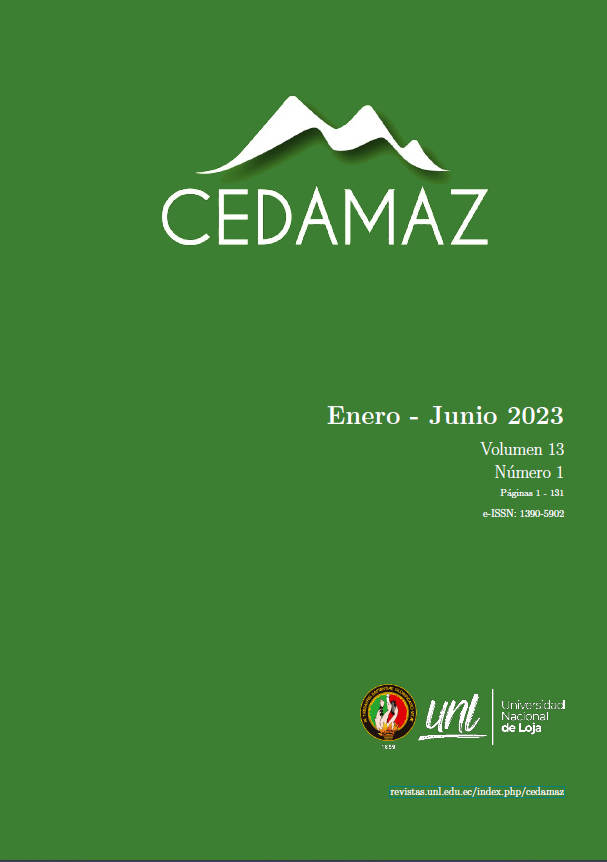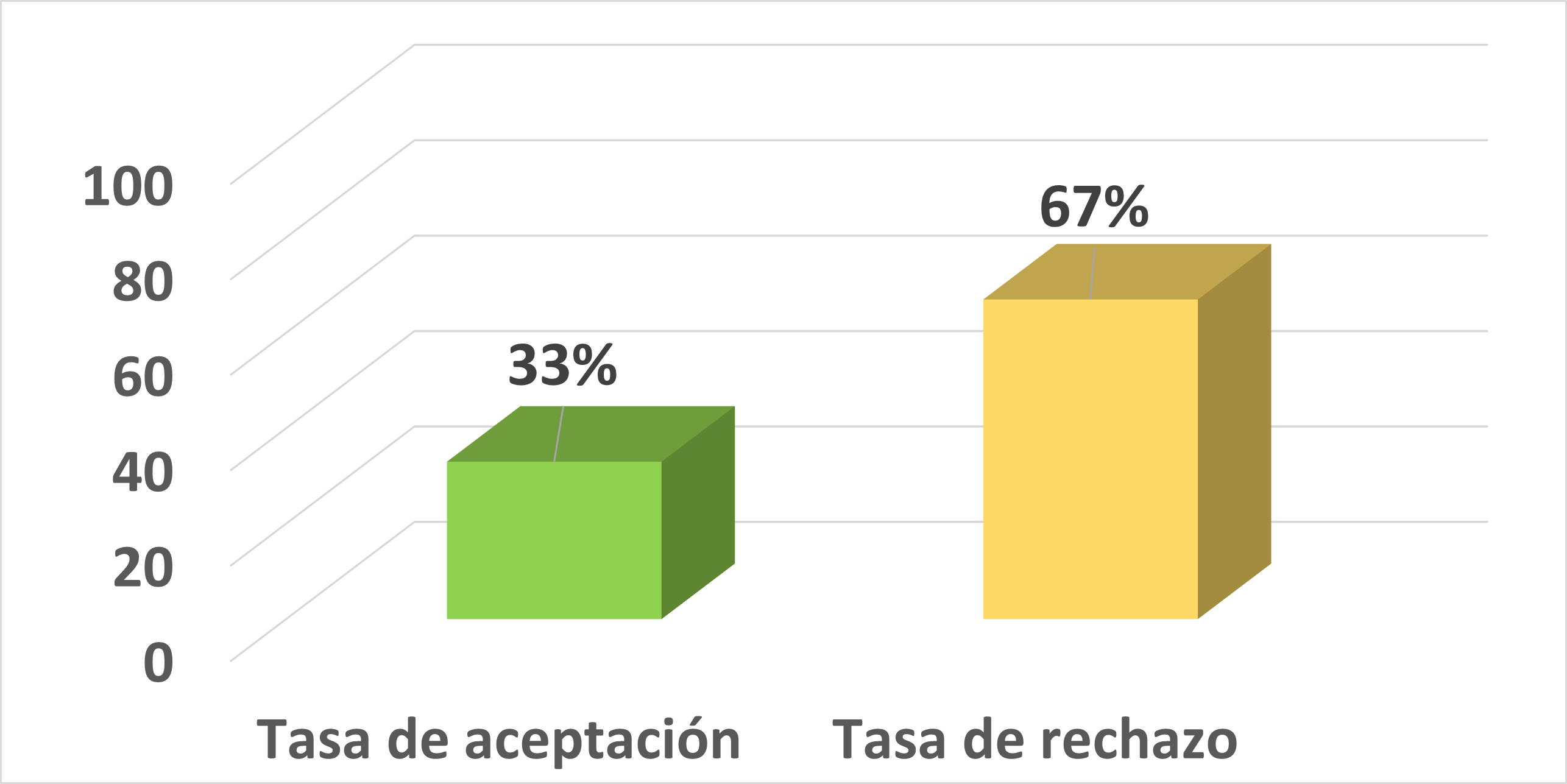Study and implementation of an interactive topographic map simulator
DOI:
https://doi.org/10.54753/cedamaz.v13i1.1841Keywords:
3D simulator, Augmented reality, Contour lines, Topographic mapping, Interactive learningAbstract
Interactive 3D simulation devices for augmented reality topography are very helpful for creating topographic models and for teaching Earth sciences. This implementation is constituted by two main stages, the first stage is formed by the construction of the sandbox structure; the second stage is constituted by the adjustment and calibration of the augmented reality software, which will project the image of the relief on the sand surface. This device will be a tool to create new teaching resources that will allow teachers to impart their knowledge in a more interactive and practical way in subjects such as petrography, cartography, geographic information systems, application of mining software, mining geotechnics, etc. This resource is presented to promote and enhance active methodologies based on interactive learning.References
AlNajdi, S. M. (2022). The effectiveness of using augmented reality (AR) to enhance student performance: using quick response (QR) codes in student textbooks in the Saudi education system. Educational Technology Research and Development, 70(3), 1105–1124. https://doi.org/10.1007/s11423-022-10100-4
Atit, K., Weisberg, S. M., Newcombe, N. S., & Shipley, T. F. (2016). Learning to interpret topographic maps: Understanding layered spatial information. Cognitive Research: Principles and Implications, 1(1), 2. https://doi.org/10.1186/s41235-016-0002-y
Blázquez Sevilla, A. (2017). Realidad aumentada en Educación. Universidad Politecnica de Madrid. GATE. https://oa.upm.es/45985/
Ebrahimi, T. (2017). Effect of Technology on Education in Middle East: Traditional Education Versus Digital Education. In M. Friedrichsen & Y. Kamalipour (Eds.), Digital Transformation in Journalism and News Media: Media Management, Media Convergence and Globalization (pp. 519–531). Springer International Publishing. https://doi.org/10.1007/978-3-319-27786-8_38
Giner, J., & Rodríguez, E. (n.d.). Mapas topográficos. https://formacion.uam.es/pluginfile.php/83821/mod_resource/content/1/PRACTICA6.pdf
Herranz, A. H., Ainhoa, G. G., Emmanuel, H. F., & Alejandra, G. C. (2019). AR Sandbox: un recurso educativo interactivo para la modelización y simulación de procesos geológicos en el aula. Enseñanza de Las Ciencias de La Tierra, 27(1 SE-Artículos). https://raco.cat/index.php/ECT/article/view/356268
Kim, H., & Choi, Y. (2019). Development of a 3D User Interface based on Kinect Sensor and Bend-Sensing Data Glove for Controlling Software in the Mining Industry. Journal of the Korean Society of Mineral and Energy Resources Engineers, 44–52. https://doi.org/https://doi.org/10.32390/ksmer.2019.56.1.044
Melo Bohórquez, I. M. (2018). Realidad aumentada y aplicaciones. Tecnología Investigación y Academia, 6(1 SE-Investigación), 28–35. https://revistas.udistrital.edu.co/index.php/tia/article/view/11281
Montenegro-Rueda, M., & Fernández-Cerero, J. (2022). Realidad aumentada en la educación superior: posibilidades y desafíos. Revista Tecnología, Ciencia y Educación, 95–114.
Nebrija, G. C. (2016). Metodología de enseñanza y para el aprendizaje. Universidad Nebrija. Obtenido de Https://Www. Nebrija. Com/Nebrija-Global-Campus/Pdf/Metodologia-Ensenanza-Aprendizaje. Pdf.
Oliver Kreylos. (n.d.). Vrui VR Toolkit. https://web.cs.ucdavis.edu/~okreylos/ResDev/Vrui/LinkDownload.html
Perez-Calañas, C., Hernández-Garrido, R., Perea, D., & Rodriguez-Perez, Á. M. (2023). Augmented Reality (AR) in Education: An Exploratory Analysis. In F. Cavas-Martínez, M. D. Marín Granados, R. Mirálbes Buil, & O. D. de-Cózar-Macías (Eds.), Advances in Design Engineering III (pp. 703–710). Springer International Publishing.
Pérez, S. M., Robles, B. F., & Osuna, J. B. (2021). La realidad aumentada como recurso para la formación en la educación superior. Campus Virtuales, 10(1), 9–19.
Savova, D. (2016). AR sandbox in educational programs for disaster. 6th International Conference on Cartography and GIS, 847, 13–17.
Telefónica, F. (2011). Realidad Aumentada: una nueva lente para ver el mundo. Fundación Telefónica. https://books.google.com.ec/books?id=OXHmCgAAQBAJ
Turner, C. (2022). Augmented Reality, Augmented Epistemology, and the Real-World Web. Philosophy & Technology, 35(1), 19. https://doi.org/10.1007/s13347-022-00496-5
Urrea Quiroga, G., Alvarado Perilla, J. P., Garcia Sepulveda, J. I., Niño Navia, J. A., Barragan De Los Rios, G. A., & Hazbon Alvarez, O. (2013). DEL AULA A LA REALIDAD. LA IMPORTANCIA DE LOS LABORATORIOS EN LA FORMACIÓN DEL INGENIERO. CASO DE ESTUDIO: INGENIERÍA AERONÁUTICA – UNIVERSIDAD PONTIFICIA BOLIVARIANA. Encuentro Internacional de Educación En Ingeniería, SE-Innovación en la formación. https://doi.org/10.26507/ponencia.1428
Published
How to Cite
Issue
Section
License
Copyright (c) 2023 CEDAMAZ

This work is licensed under a Creative Commons Attribution-NonCommercial-NoDerivatives 4.0 International License.
Those authors who have publications with this journal, accept the following terms:
- After the scientific article is accepted for publication, the author agrees to transfer the rights of the first publication to the CEDAMAZ Journal, but the authors retain the copyright. The total or partial reproduction of the published texts is allowed as long as it is not for profit. When the total or partial reproduction of scientific articles accepted and published in the CEDAMAZ Journal is carried out, the complete source and the electronic address of the publication must be cited.
- Scientific articles accepted and published in the CEDAMAZ journal may be deposited by the authors in their entirety in any repository without commercial purposes.
- Authors should not distribute accepted scientific articles that have not yet been officially published by CEDAMAZ. Failure to comply with this rule will result in the rejection of the scientific article.
- The publication of your work will be simultaneously subject to the Attribution-NonCommercial-NoDerivatives 4.0 International (CC BY-NC-ND 4.0)









